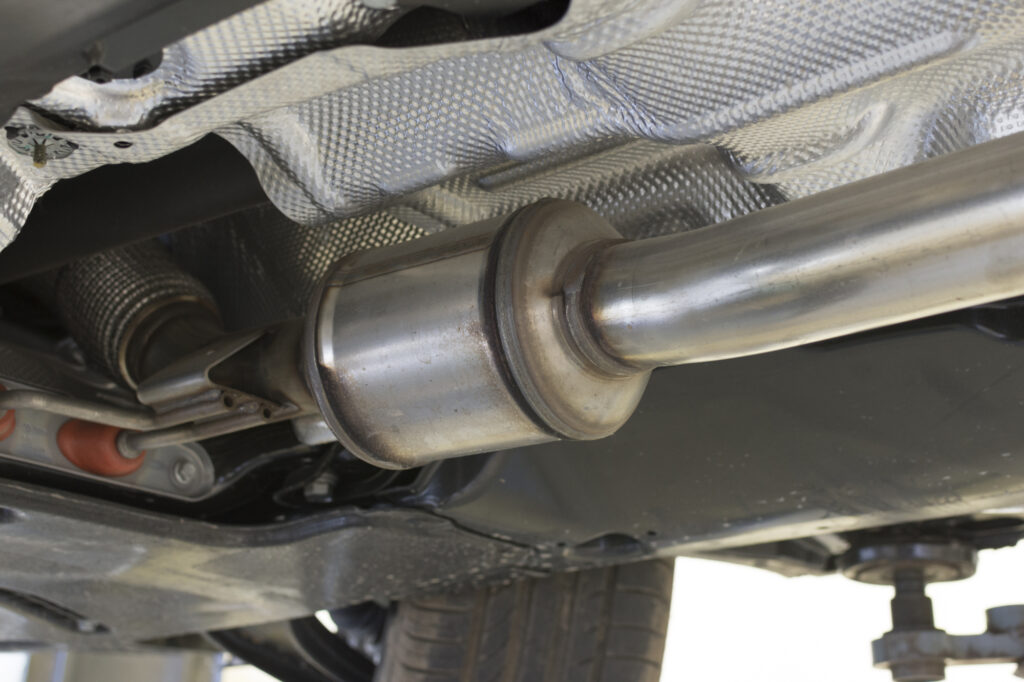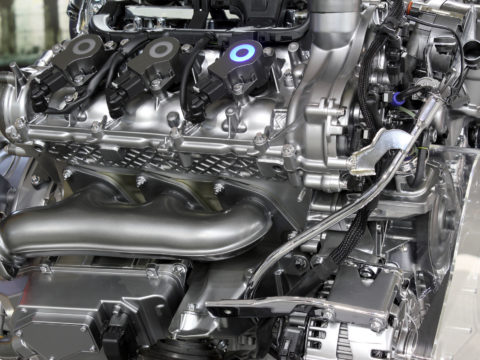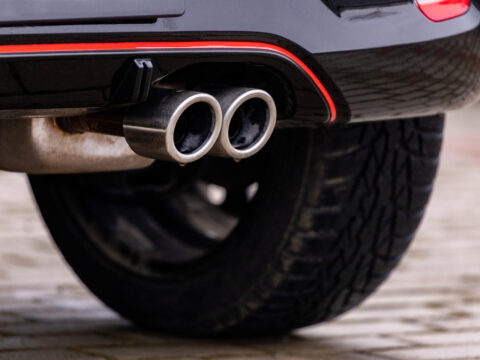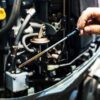Your catalytic converter is an essential component of your car’s exhaust system that minimizes the pollution caused by your gas-powered engine.
It converts the toxic gasses produced in fuel combustion into less harmful gasses, thus saving the earth from pollution.
However, your catalytic converter may sometimes clog, barring it from performing this vital function.

In such circumstances, you can unclog it by cleaning the component by taking it off the car, clearing the blockage, or cleaning it while it is still intact in the vehicle.
Let’s explore more on the subject.
Contents
What Causes a Clogged Catalytic Converter?
All catalytic converters get damaged at some point due to wear and tear or accumulating particles from smoke passing through the exhaust system. The damage often leads to the system’s failure.
However, there are several reasons your catalytic converter could clog prematurely, necessitating cleaning, repair, or replacement. Below is a detailed discussion of the primary causes of catalytic convertor failure:
I. Unburned Fuel Leaking into the Exhaust System
The catalytic converter receives and converts toxic gasses from combusted fuel into less toxic gasses. However, in some instances, the combustion chamber may fail to burn up all the fuel, and the unburnt fuel may make its way to the catalytic converter.
The burning will melt the converter’s surface and culminate in a clog since it is not equipped to handle combustion. It is essential to know what causes this and put an end to it before it damages other parts.
II. Leaking Coolant or Antifreeze
The engine coolant is a colored liquid that helps regulate your engine’s temperature. It is released throughout the engine during extremely hot or cold temperatures to ensure an even operating temperature.
In some unfortunate circumstances, the coolant may make its way into the exhaust system and combine with the carbon deposits to form thick soot that builds up on your converter’s air and clog it.
The blockage prevents the converter from filtering harmful emissions and restricts exhaust flow. Over time, the buildup results in a clogged catalytic converter and increases backpressure, which could damage your engine.
III. Oil Slipping into the Exhaust System
Your engine will experience some damage over time and lose its efficiency. Consequently, its seals and valves may not work as they should and let the oil spill into the exhaust system.
Due to the high temperatures in the catalytic converter, oil that makes its way into the exhaust system will combust and melt, leading to clogging. Similarly, the oil may form barriers to the converter’s essential components.
Consequently, you may notice that your catalytic converter is not functioning optimally.
IV. Damaged Spark Plugs
When working correctly, spark plugs ignite the fire and spark up the combustion needed to burn fuel resulting in your car’s operation. Thus, unburned fuel may make its way into the exhaust system when they fail or misfire and gradually contribute to blockage in the catalytic converter.
V. Structural Damage
Your catalytic converter’s components, such as the catalyst honeycomb, are crafted from fragile ceramic material. If such features have a weakened structure, they may get fractured and break into little pieces when you drive.
Consequently, the exhaust flow is interrupted, back pressure increases, and the catalytic converter is clogged.
Can a Catalytic Converter Unclog Itself?
Once your catalytic converter is clogged, there is a possibility it could unclog itself. However, this requires a little initiative from you and depends on the severity of damage to the car component.
For a catalytic converter to unclog itself, you must pour a bottle of converter cleaner into a half-full fuel tank. Once you dump the fluid, drive your car around for about half an hour, and your catalytic converter will unclog itself.
However, your catalytic converter will not unclog if it is sealed shut. You must take active steps to clear the blockage or replace the car component in such circumstances.
A sure sign that your catalytic converter is beyond self-care is if your engine fails to start. The engine failure indicates that it cannot get adequate airflow to ignite.

Can Catalytic Converters be Cleaned?
If your catalytic converter cannot unclog itself, it is possible to remove and clean it yourself. The best way to clean the exhaust system component is using water and a lacquer cleaner to eliminate any blockage.
To effectively remove carbon deposits, you could use additive cleaners such as Oxicat. However, most car manufacturers do not recommend cleaning your catalytic converter.
One wrong move could damage the internal components and render the exhaust system useless. As such, most car manufacturers prefer you have a clogged catalytic converter replaced by a professional mechanic to avoid any complications.
What is the Best Way to Clean a Catalytic Converter?
There are two ways you could unclog a catalytic converter. You could take it off the car or clear the blockage, or you could clean it while it is still intact in the vehicle.
Of these methods, the best way to clean the exhaust system component is by detaching it from the vehicle. The approach lets you look at the accumulated carbon deposits and meticulously clean them.
Let’s have a look at the different cleaning methods.
I. How to Clean a Catalytic Converter Off the Car
Although effective, cleaning your catalytic converter off your vehicle is physically demanding. People without experience disassembling and assembling car parts should not attempt this as they may make a costly mistake.
So, if it is your first time cleaning your catalytic converter, ensure you contact your mechanic and get the much-needed guidance.
Once you are ready, gather the cleaning products you have around the house and follow these simple steps:
- Use the appropriate tools to remove the catalytic converter from your car gently.
- Lather some detergent in a bucket of water and soak the catalytic converter in the solution for at least twelve hours.
- Examine the converter and check whether the honeycomb is free of carbon deposits and debris that could have caused the clog. If so, dry the converter and reattach it to your vehicle. If not, replace the soapy water and soak the converter a little more.
After reattaching the converter, check whether your engine light is still on when you turn on your car. A blinking engine light indicates you may need a catalytic converter replacement.
Nonetheless, before you rush to replace the exhaust system component, you could try a second cleaning method.
II. How to Unclog a Catalytic Converter Without Removing It
Cleaning your catalytic converter by removing it seems too hectic or ineffective. You could try unclogging it while it is attached to your car. All you need is a catalytic converter cleaner, and follow the following steps:
- Choose the appropriate catalytic cleaner for your vehicle. Different car engines require different cleaners. Some converter cleaners are suitable for diesel engines, while others are appropriate for gas engines.
- Ensure your gas tank is half full. Cleaners require a bit of gas to unclog your catalytic converter effectively.
- Read the instructions on the cleaner bottle and empty it into the gas tank as prescribed. Drive the car around so the cleaner can effectively mix with the gas and make its way to the exhaust system.
- Drive your vehicle as you usually would and refill the gas tank when it is almost empty.
Once you’ve added the catalytic converter cleaner to your gas tank and driven around to an almost empty gas tank, check whether the engine light is still on. If so, take your car to the mechanic for a diagnosis and possible converter replacement.
How Much Would it Cost to Unclog a Catalytic Converter?
If you have a clogged catalytic converter, you could simply reverse the damage by purchasing a cleaner such as Cataclean for $8-$20, apply it as prescribed, and you are good to go.
However, if the damage is too severe, you may need a much more expensive replacement.
Typically, replacing your converter will cost you between $450 and $2600, which includes the cost of a new converter and labor. The price depends on your car brand.
What Happens If You Drive with a Clogged Catalytic Converter?
A clogged catalytic converter does not prevent your car from running. However, operating a vehicle with a clogged converter could burn through the component and cause irreversible damage to your exhaust system.
Similarly, a clogged catalytic converter could cause an engine to misfire due to the incomplete combustion it causes.
The unburnt fuel makes its way to the converter and causes it to overheat and increases backpressure, which inevitably contributes to engine failure.
Accordingly, it is essential to unclog your catalytic converter or schedule a replacement as soon as the problem arises.
Conclusion
Like most car components, your catalytic converter experiences wear and tear or circumstances contributing to its inefficiency.
In most cases, a clogged catalytic converter could hinder the exhaust system from performing its function.
You could unclog the converter and rid it of interfering carbon deposits by detaching and cleaning it or cleaning it while it is still attached to your car.
Be careful when cleaning the converter to ensure you do not damage it. Contact a qualified mechanic to guide you through the process if it is your first time.














